Earthquake Sound SuperNova MKV User manual
- Category
- Subwoofers
- Type
- User manual
This manual is also suitable for

Sound That Will Move You
SuperNova MKV Subwoofer
Operator’s Manual
“Simply The
Most Amazing
Subwoofer I've
Ever Tested.”
“There Might
Be Better
Subwoofers
On The Planet,
But I Haven’t
Heard Them.”
“For The
Ultimate In Gut
Wrenching
Bass.”

Dear Valued Customer,
Welcome to the eclectic world of Earthquake High
Fidelity sound systems; you are about to experience the
SuperNova MKV subwoofer. This system is designed to
dramatically enhance your enjoyment of music and films at
home by adding power and impact to low frequency sound
effects.
Earthquake Sound Corporation is located in the heart
of the Silicon Valley. It specializes in manufacturing high end
home and car audio products ranging from the smallest driver
to the loudest subwoofer system. In its dedication to excel-
lence, Earthquake has maintained extensive programs in
research and development to provide you with the highest
quality audio products.
This owner’s manual is designed to better acquaint
you with the SuperNova MKV subwoofer system and to guide
you through the phases of system design and application. It is
imperative that you read this manual in its entirety.
EARTHQUAKE technicians and staff look forward to answer
any questions you might have, please call (1-800-576-7944).
CAUTION: the SuperNova MKV is capable of generating high
sound pressure levels. You should exercise caution when
operating this subwoofer system. Long term exposures to high
levels of sound pressure will cause permanent damage to your
hearing. Sound pressure levels exceeding 85dB can be
dangerous with constant exposure. Set your audio system to a
comfortable loudness level. The SuperNova MKV subwoofer
system is designed to generate high levels of low frequencies
(110 dB to 128 dB at 15 Hz to 20 Hz) and this will transmit a
tremendous amount of vibration into walls, shelves and the
structure; thus causing sheet rock flexing, glass and other
objects to fall off shelves. Earthquake Sound Corporation does
not assume liability for damages resulting from the direct use of
the SuperNova MKV, and urges users to play the SuperNova
MKV in moderate levels.
On A Personal Note...
Joseph J. Sahyoun - President and
inventor of the SLAPS - proudly
showing off a SLAPS12 at one of the
SuperNova assembly lines.
The subwoofer system weighs over 80 Lbs. It is considerably heavy for
an average person to carry or maneuver. To prevent injuries and eliminate any possible
damage to your SuperNova MKV, we encourage you to employ the help of a friend when
unpacking the unit; further we suggest the following:
#1. Always wear a back support belt when carrying / lifting the SuperNova MKV.
#2. If possible, get someone to help you move the SuperNova MKV.
#3. Do not apply pressure or push against the face of the speaker; this will cause
irreparable damage to the cone and suspension.
#4. When carrying the SuperNova MKV, make sure that the speaker is on the other
side, away from your chest (eliminating the chance of pushing against the face of the
speaker).
#5. Do not drop the SuperNova MKV or subject it to sudden shocks. This will damage
the external finish and weaken the enclosure, creating air leaks.
#6. Avoid exposing the SuperNova MKV to moisture. Water will damage the wood
structure as well as the amplifier and speakers.
#7. Cleaning the SuperNova MKV is best done using soft cloth; if needed, use mild
detergent with water. Like with any other electrical unit, always unplug the MKV before
cleaning it.
SuperNova MKV
Safe & Proper Handling Of Your SuperNova
Unpacking Your SuperNova
The SuperNova MKV is double boxed for product safety. We highly suggest having a
padded surface and at least two (2) people to safely unpack the SuperNova MKV.
Step 1
On a padded
surface, carefully
place the box on its
side to remove the
bottom packing tape
and staples.
Step 2
Without tilting the
box too much, tug
the bottom flaps
outward and keep
the protective foam
in place.
Step 3
Gently reposition the
box upright.
Step 4
Slide the box off,
minding the protective
foam on the top,
bottom, and sides of
the subwoofer.

Dear Valued Customer,
Welcome to the eclectic world of Earthquake High
Fidelity sound systems; you are about to experience the
SuperNova MKV subwoofer. This system is designed to
dramatically enhance your enjoyment of music and films at
home by adding power and impact to low frequency sound
effects.
Earthquake Sound Corporation is located in the heart
of the Silicon Valley. It specializes in manufacturing high end
home and car audio products ranging from the smallest driver
to the loudest subwoofer system. In its dedication to excel-
lence, Earthquake has maintained extensive programs in
research and development to provide you with the highest
quality audio products.
This owner’s manual is designed to better acquaint
you with the SuperNova MKV subwoofer system and to guide
you through the phases of system design and application. It is
imperative that you read this manual in its entirety.
EARTHQUAKE technicians and staff look forward to answer
any questions you might have, please call (1-800-576-7944).
CAUTION: the SuperNova MKV is capable of generating high
sound pressure levels. You should exercise caution when
operating this subwoofer system. Long term exposures to high
levels of sound pressure will cause permanent damage to your
hearing. Sound pressure levels exceeding 85dB can be
dangerous with constant exposure. Set your audio system to a
comfortable loudness level. The SuperNova MKV subwoofer
system is designed to generate high levels of low frequencies
(110 dB to 128 dB at 15 Hz to 20 Hz) and this will transmit a
tremendous amount of vibration into walls, shelves and the
structure; thus causing sheet rock flexing, glass and other
objects to fall off shelves. Earthquake Sound Corporation does
not assume liability for damages resulting from the direct use of
the SuperNova MKV, and urges users to play the SuperNova
MKV in moderate levels.
On A Personal Note...
Joseph J. Sahyoun - President and
inventor of the SLAPS - proudly
showing off a SLAPS12 at one of the
SuperNova assembly lines.
The subwoofer system weighs over 80 Lbs. It is considerably heavy for
an average person to carry or maneuver. To prevent injuries and eliminate any possible
damage to your SuperNova MKV, we encourage you to employ the help of a friend when
unpacking the unit; further we suggest the following:
#1. Always wear a back support belt when carrying / lifting the SuperNova MKV.
#2. If possible, get someone to help you move the SuperNova MKV.
#3. Do not apply pressure or push against the face of the speaker; this will cause
irreparable damage to the cone and suspension.
#4. When carrying the SuperNova MKV, make sure that the speaker is on the other
side, away from your chest (eliminating the chance of pushing against the face of the
speaker).
#5. Do not drop the SuperNova MKV or subject it to sudden shocks. This will damage
the external finish and weaken the enclosure, creating air leaks.
#6. Avoid exposing the SuperNova MKV to moisture. Water will damage the wood
structure as well as the amplifier and speakers.
#7. Cleaning the SuperNova MKV is best done using soft cloth; if needed, use mild
detergent with water. Like with any other electrical unit, always unplug the MKV before
cleaning it.
SuperNova MKV
Safe & Proper Handling Of Your SuperNova
Unpacking Your SuperNova
The SuperNova MKV is double boxed for product safety. We highly suggest having a
padded surface and at least two (2) people to safely unpack the SuperNova MKV.
Step 1
On a padded
surface, carefully
place the box on its
side to remove the
bottom packing tape
and staples.
Step 2
Without tilting the
box too much, tug
the bottom flaps
outward and keep
the protective foam
in place.
Step 3
Gently reposition the
box upright.
Step 4
Slide the box off,
minding the protective
foam on the top,
bottom, and sides of
the subwoofer.

Every component of an Earthquake driver is designed for
accurate reproduction of bass and sub-bass frequencies. With a
massive moving structure, these subwoofers operate with
extremely low distortion and impressive transient response. Their
performance is attributed to a non-conventional motor structure
design that integrates components such as:
* Double stacked, high-gauss magnets, with a total height of
1.5 inches
* Over 7 inch (D), epoxy coated super spider. Chill-plated for
long lasting linear performance
* 3” diameter, high temperature voice coil, with 1.85” copper
winding (height)
* 1.5” thick, single layer, thermally pressed poly-ether foam
surround
The SuperNova subwoofer structure allows high excursions (19
to 21mm) without physical deformation or running out of Reactive
Electromagnetic Coupling.
Premium Earthquake Subwoofers
Besides its many advanced features, the SuperNova MKV is
armed with the Symmetrically Loaded Audio Passive System -
SLAPS (patented by Earthquake Sound Corporation). The
SLAPS is capable of moving more than 4” peak to peak at 15Hz.
More air movement translates to higher SPL; the new passive
system adds an excess of 5dB at 15Hz, that is more than twice as
loud at that frequency.
How is that possible? Current passive woofer technology relies
upon non linear, limited movement suspension. In contrast, the
SLAPS employs dual (identical) suspensions, allowing the
passive driver to move the same amount of air in either direction.
Further, the components used to build the suspension allow for
long excursions with no physical deformation or limitations.
The SuperNova MKV performance exceeds THX
requirements of 105 dB at 30 Hz by far... In flat mode,
it achieves 123 dB at 30 Hz and reaches upwards of
128 dB when the bass boost from an audio processor
(source) is used. More impressive is its capability to
dish out 108 dB at 15 Hz and near 100 dB at 10 Hz -
as shown in the graphs below. Keep in mind that
typical subwoofer systems fail to reproduce frequen-
cies below the 20 Hz mark.
Brace yourself and everything else in the room... This
SuperNova will extend the already flat, accurate, and
on-time low frequency response to deeper levels
where no other subwoofers have gone before. It can
put out enough bass energy to fill even large rooms
with sonic rumbling.
The SuperNova MKV delivers an impressive amount
of features aimed at fulfilling the promise of ground-
shaking bass, as suggested by its name.
SLAPS.
THX Standards... One Octave Lower!
SLAPS
What Makes A SuperNova?
SLAPS used in SuperNova MKV are tuned by
adding mass to the structure of the passive
radiator. Steel cylinders are used to tune the
SLAPS to the desired frequency.
Telling The Difference Between The Passive
and Active Drivers
10” models: The 10” SuperNova MKV has a
deep-cone active driver with the Earthquake logo
on the front of it. Its SLAPS passive radiator is
flat and has no logo.
12” and 15” models: Both of these models use
flat active drivers and passive radiators which
both look almost identical. But they are not; the
one with the bolt head in the center is the SLAPS
passive radiator.
Fact: Subwoofers reproduce frequencies with wavelengths
that are long in relation to the dimensions of most living rooms.
Standing waves will boost or cancel various frequencies due
to the interaction with the room boundaries. Moving a
subwoofer in a room will change what you hear in the listening
position a lot.
For maximum bass reinforcement, the SuperNova MKV
system should be placed in the corner of your living room with
the subwoofers facing the wall. This creates acoustical
coupling with the walls, which in turn leads to a 9 decibels of
boost in the overall response of the Supernova. Keep a 3"
clearance between the subwoofer and the walls.
Fine tuning the SuperNova MKV requires adjustments to the
crossover point, volume control and the phase switch. These
controls are located on the side of the enclosure. For ease of
tuning, we recommend that you turn the SuperNova MKV
around to expose the controls, and place it in position (corner).
Set your stereo system to a moderate listening level and adjust
the SuperNova MKV accordingly. The SuperNova MKV is
equipped with a 24 dB/Oct. low pass filter designed to
eliminate vocals from entering the system. When tweaking,
gradually reduce the crossover point setting to eliminate
vocals from seeping into the amplifier.
Corner Loading = + 9 Decibels Of Free Power
SUPERNOVA MKV
CORNER LOADING
Consider that room permissibility plays a big role in
positioning. One thing is certain, achieving a
perfect subwoofer setup in your living room will
require time and experimentation.
When used for special effects reinforcement
(10Hz to 40Hz range), the SuperNova MKV fares
well in corner loading position; as corner loading
naturally boosts the subharmonic frequencies by
9dB.
Used with music (10Hz to 100Hz), it is recom-
mended that the SuperNova MKV is placed in a
corner, yet it can be placed in a centered position.
By using two MKV subwoofer systems (one in each
corner), corner loading effects can be achieved
without disturbing the balance of front stereo
images.
Corner Loading is recommended for
movies and sound tracks effects.
MKV
Widescreen
Viewing position
Positioning Options
Corner Loading will give you an added 6 to 9 decibels of
sound pressure; also it reduces the level of vocals - if
present - emitted from the subwoofer. We recommend
that the active subwoofer face the listener, while the
passive faces the wall (corner). Keep a clearance of 5” to
7” between the SLAPS and the wall - remember that the
SLAPS can travel up to 4”.

Every component of an Earthquake driver is designed for
accurate reproduction of bass and sub-bass frequencies. With a
massive moving structure, these subwoofers operate with
extremely low distortion and impressive transient response. Their
performance is attributed to a non-conventional motor structure
design that integrates components such as:
* Double stacked, high-gauss magnets, with a total height of
1.5 inches
* Over 7 inch (D), epoxy coated super spider. Chill-plated for
long lasting linear performance
* 3” diameter, high temperature voice coil, with 1.85” copper
winding (height)
* 1.5” thick, single layer, thermally pressed poly-ether foam
surround
The SuperNova subwoofer structure allows high excursions (19
to 21mm) without physical deformation or running out of Reactive
Electromagnetic Coupling.
Premium Earthquake Subwoofers
Besides its many advanced features, the SuperNova MKV is
armed with the Symmetrically Loaded Audio Passive System -
SLAPS (patented by Earthquake Sound Corporation). The
SLAPS is capable of moving more than 4” peak to peak at 15Hz.
More air movement translates to higher SPL; the new passive
system adds an excess of 5dB at 15Hz, that is more than twice as
loud at that frequency.
How is that possible? Current passive woofer technology relies
upon non linear, limited movement suspension. In contrast, the
SLAPS employs dual (identical) suspensions, allowing the
passive driver to move the same amount of air in either direction.
Further, the components used to build the suspension allow for
long excursions with no physical deformation or limitations.
The SuperNova MKV performance exceeds THX
requirements of 105 dB at 30 Hz by far... In flat mode,
it achieves 123 dB at 30 Hz and reaches upwards of
128 dB when the bass boost from an audio processor
(source) is used. More impressive is its capability to
dish out 108 dB at 15 Hz and near 100 dB at 10 Hz -
as shown in the graphs below. Keep in mind that
typical subwoofer systems fail to reproduce frequen-
cies below the 20 Hz mark.
Brace yourself and everything else in the room... This
SuperNova will extend the already flat, accurate, and
on-time low frequency response to deeper levels
where no other subwoofers have gone before. It can
put out enough bass energy to fill even large rooms
with sonic rumbling.
The SuperNova MKV delivers an impressive amount
of features aimed at fulfilling the promise of ground-
shaking bass, as suggested by its name.
SLAPS.
THX Standards... One Octave Lower!
SLAPS
What Makes A SuperNova?
SLAPS used in SuperNova MKV are tuned by
adding mass to the structure of the passive
radiator. Steel cylinders are used to tune the
SLAPS to the desired frequency.
Telling The Difference Between The Passive
and Active Drivers
10” models: The 10” SuperNova MKV has a
deep-cone active driver with the Earthquake logo
on the front of it. Its SLAPS passive radiator is
flat and has no logo.
12” and 15” models: Both of these models use
flat active drivers and passive radiators which
both look almost identical. But they are not; the
one with the bolt head in the center is the SLAPS
passive radiator.
Fact: Subwoofers reproduce frequencies with wavelengths
that are long in relation to the dimensions of most living rooms.
Standing waves will boost or cancel various frequencies due
to the interaction with the room boundaries. Moving a
subwoofer in a room will change what you hear in the listening
position a lot.
For maximum bass reinforcement, the SuperNova MKV
system should be placed in the corner of your living room with
the subwoofers facing the wall. This creates acoustical
coupling with the walls, which in turn leads to a 9 decibels of
boost in the overall response of the Supernova. Keep a 3"
clearance between the subwoofer and the walls.
Fine tuning the SuperNova MKV requires adjustments to the
crossover point, volume control and the phase switch. These
controls are located on the side of the enclosure. For ease of
tuning, we recommend that you turn the SuperNova MKV
around to expose the controls, and place it in position (corner).
Set your stereo system to a moderate listening level and adjust
the SuperNova MKV accordingly. The SuperNova MKV is
equipped with a 24 dB/Oct. low pass filter designed to
eliminate vocals from entering the system. When tweaking,
gradually reduce the crossover point setting to eliminate
vocals from seeping into the amplifier.
Corner Loading = + 9 Decibels Of Free Power
SUPERNOVA MKV
CORNER LOADING
Consider that room permissibility plays a big role in
positioning. One thing is certain, achieving a
perfect subwoofer setup in your living room will
require time and experimentation.
When used for special effects reinforcement
(10Hz to 40Hz range), the SuperNova MKV fares
well in corner loading position; as corner loading
naturally boosts the subharmonic frequencies by
9dB.
Used with music (10Hz to 100Hz), it is recom-
mended that the SuperNova MKV is placed in a
corner, yet it can be placed in a centered position.
By using two MKV subwoofer systems (one in each
corner), corner loading effects can be achieved
without disturbing the balance of front stereo
images.
Corner Loading is recommended for
movies and sound tracks effects.
MKV
Widescreen
Viewing position
Positioning Options
Corner Loading will give you an added 6 to 9 decibels of
sound pressure; also it reduces the level of vocals - if
present - emitted from the subwoofer. We recommend
that the active subwoofer face the listener, while the
passive faces the wall (corner). Keep a clearance of 5” to
7” between the SLAPS and the wall - remember that the
SLAPS can travel up to 4”.

Four (4) MKV Arrangement
More bass in the right places
SUBWOOFER
LFE
SUBWOOFER
LFE
SUBWOOFER
LFE+L
SUBWOOFER
LFE+R
Corner Loading Placement
Ideally, place the seating about 2/3 of the room away from
the television.
SUBWOOFER
LFE
Two (2) MKV Arrangements - Seating Based
Placing the two subwoofers on the vertical axis of the
seating area
Two (2) MKV Arrangements - Seating Based
Placing the two subwoofers on the horizontal axis of the
seating area
SUBWOOFER
LFE+L
SUBWOOFER
LFE+R
SUBWOOFER
LFE
SUBWOOFER
LFE
Alternative Subwoofer Placement Options
Surround System Placement
Surround speakers are there to envelop three dimensional
sound that places you in the middle of the action. Ideally, your
primary pair of surround speakers should be placed to the left
and right of your listening position — either in line with it, or just
behind it. They should form a 90°-110° angle with respect to
your television. In a 6.1-channel or 7.1-channel system with
more than two surround speakers, or if side placement is not
available for your surrounds in a standard 5.1-channel setup,
consider placement behind your listening position, facing the
front of the room. Surround speakers should be placed high
enough so that the drivers do not fire directly at your ears when
you’re sitting down. As a rule of thumb, place them at ear level
while you are in standing position. Most people tend to over
amplify the rear speakers. This is not recommended as it can
overpower the front speakers. Most of the time, the rear
speakers are relatively quiet. They simply come on when there
are special effects.
Since every room has different acoustics, you might need to
experiment with the speakers aiming. You may get good
results by pointing them at the ceiling or toward the rear
corners of the room. If no side or rear walls are available for
mounting your speakers, try placing a pair of traditional
bookshelf speakers on speaker stands, slightly behind and to
the sides of your listening position. Avoid aiming them directly
at your listening position. You may also try any of our Sweet
spot, IQ Series and Imãge in-ceiling speakers.
FRONT
SUBWOOFER
RIGHT
FRONT
90° - 110°
MKV
CENTER
25° - 30°25° - 30°
0°
LEFT
REAR
RIGHT
90° - 110°
REAR
LEFT
Speaker Placement in 5.1 System
Position the rear left and right speakers 90° - 110° across
from the primary listening/seating spot and at about 6 feet
from the floor.
Speaker Placement in 6.1 System
Position the rear center speakers behind from the primary
listening/seating spot and at about 6 feet from the floor.
Placing the MKV subwoofer close to the listening/seating
spot delivers more vibrations and subharmonics.
FRONT
SUBWOOFER
REAR CENTER
RIGHT
FRONT
90° - 110°
MKV
CENTER
25° - 30°25° - 30°
0°
LEFT
REAR
RIGHT
90° - 110°
REAR
LEFT
FRONT
SUBWOOFER
RIGHT
FRONT
90° - 110°
REAR
REAR
RIGHT
135° - 150°135° - 150°
MKV
CENTER
25° - 30°25° - 30°
0°
LEFT
SURROUND
RIGHT
90° - 110°
SURROUND
LEFT
LEFT
Speaker Placement in 7.1 System
Position the left and right surround speakers at 90°angle
and the left and right rear speakers at 135° - 150°angle with
respect of the television and about 6 feet from the floor.

Four (4) MKV Arrangement
More bass in the right places
SUBWOOFER
LFE
SUBWOOFER
LFE
SUBWOOFER
LFE+L
SUBWOOFER
LFE+R
Corner Loading Placement
Ideally, place the seating about 2/3 of the room away from
the television.
SUBWOOFER
LFE
Two (2) MKV Arrangements - Seating Based
Placing the two subwoofers on the vertical axis of the
seating area
Two (2) MKV Arrangements - Seating Based
Placing the two subwoofers on the horizontal axis of the
seating area
SUBWOOFER
LFE+L
SUBWOOFER
LFE+R
SUBWOOFER
LFE
SUBWOOFER
LFE
Alternative Subwoofer Placement Options
Surround System Placement
Surround speakers are there to envelop three dimensional
sound that places you in the middle of the action. Ideally, your
primary pair of surround speakers should be placed to the left
and right of your listening position — either in line with it, or just
behind it. They should form a 90°-110° angle with respect to
your television. In a 6.1-channel or 7.1-channel system with
more than two surround speakers, or if side placement is not
available for your surrounds in a standard 5.1-channel setup,
consider placement behind your listening position, facing the
front of the room. Surround speakers should be placed high
enough so that the drivers do not fire directly at your ears when
you’re sitting down. As a rule of thumb, place them at ear level
while you are in standing position. Most people tend to over
amplify the rear speakers. This is not recommended as it can
overpower the front speakers. Most of the time, the rear
speakers are relatively quiet. They simply come on when there
are special effects.
Since every room has different acoustics, you might need to
experiment with the speakers aiming. You may get good
results by pointing them at the ceiling or toward the rear
corners of the room. If no side or rear walls are available for
mounting your speakers, try placing a pair of traditional
bookshelf speakers on speaker stands, slightly behind and to
the sides of your listening position. Avoid aiming them directly
at your listening position. You may also try any of our Sweet
spot, IQ Series and Imãge in-ceiling speakers.
FRONT
SUBWOOFER
RIGHT
FRONT
90° - 110°
MKV
CENTER
25° - 30°25° - 30°
0°
LEFT
REAR
RIGHT
90° - 110°
REAR
LEFT
Speaker Placement in 5.1 System
Position the rear left and right speakers 90° - 110° across
from the primary listening/seating spot and at about 6 feet
from the floor.
Speaker Placement in 6.1 System
Position the rear center speakers behind from the primary
listening/seating spot and at about 6 feet from the floor.
Placing the MKV subwoofer close to the listening/seating
spot delivers more vibrations and subharmonics.
FRONT
SUBWOOFER
REAR CENTER
RIGHT
FRONT
90° - 110°
MKV
CENTER
25° - 30°25° - 30°
0°
LEFT
REAR
RIGHT
90° - 110°
REAR
LEFT
FRONT
SUBWOOFER
RIGHT
FRONT
90° - 110°
REAR
REAR
RIGHT
135° - 150°135° - 150°
MKV
CENTER
25° - 30°25° - 30°
0°
LEFT
SURROUND
RIGHT
90° - 110°
SURROUND
LEFT
LEFT
Speaker Placement in 7.1 System
Position the left and right surround speakers at 90°angle
and the left and right rear speakers at 135° - 150°angle with
respect of the television and about 6 feet from the floor.

The SuperNova MKV subwoofer is hand assembled using high density fiber boards. The cabinet is crafted to exact tolerance for
near nil vibration. The SUPERNOVA's unsurpassed performance stems from:
*600 watts class “D”, high efficiency (99%) power amplifier
*Optical Distortion Limiting circuitry (ODL). A patented process that converts the analog audio signal to
light and optically couple it to the driver stage. When users set the gain too high, the ODL prevents the
amp from clipping; thus limiting distortion to near nil levels
*24 dB / Octave variable filter from 50 Hz to 150 Hz
*Low level inputs/outputs
*High level inputs/outputs
*Auto Signal Sensing
*0-180º Phase Switch
*Volume Control
*Vari-position remote control sensor allows users to position the remote eye anywhere in the room.
MKV’s BA-212 Amplifier
Class “D” Amplifier
U.S. PATENTS:
#6044925, #6460651,
#10/058868, #78/175574,
#78/175565, and other
patents pending.
IN
OUT
Sound That Will Move You.
WWW.EARTHQUAKESOUND.COM
LOW LEVEL
HIGH LEVEL
Remote
Right Left
Volume X-over
Freq.
24dB/Oct
Phase
Power
ON
OFF
SuperNova
MK-V
Remote eye input
Manual
volume
control
Signal detection circuitry.
When the toggle switch is
in the ON position the
subwoofer is in AUTO
ON/OFF mode. When
in the OFF position the
amplifier is shut down
completely and must be
turned on manually for
operation. NOTE: When
the subwoofer is on the
power LED will remain
glowing red at all times.
It is not an indicator for
failure etc.
Variable, 24dB per
octave, low pass filter.
Range 50Hz-150Hz.
Recommended
general setting at 2
o'clock position
Fuse holder with two
replacement 10 ampere
fuses
Perfect to feed
a center
channel amp.
Connecting Your SuperNova
Low Level -RCA- Audio Input Connection:
This is the best way to drive an audio signal into the
. Today, all signal processors (5.1/6.1 and
more advanced ones) come equipped with built-in pre-
amplifier outputs (RCA) that include a subwoofer output.
Generally, the SUB/OUT is in mono format. Connect
the SUB/OUT from the processor to the using
a “Y” connector to feed both RCA inputs of the
. However, you can connect the
one RCA input as well.
We strongly recommend that you use the best
available RCA connectors and cables. High quality cables are
normally triple shielded and the connectors are gold plated
with forceful grasping.
SuperNova MKV
SuperNova MKV
SuperNova
MKV SuperNova MKV using
just
Connection from processor to MKV using a high
quality RCA Cable
High level audio input connection:
This is the least desired way to drive an audio signal
into the subwoofer. Older stereo systems are
not equipped with pre-amplifier audio outputs, normally they
come with stereo speaker outputs (left & right).
Using “banana” plugs, connect the speaker outputs to
the corresponding MKV high level inputs (marked “FROM
RECEIVER”).
SuperNova MKV
From
Receiver/
Pre Amp
To MKV
Low Level
Input

The SuperNova MKV subwoofer is hand assembled using high density fiber boards. The cabinet is crafted to exact tolerance for
near nil vibration. The SUPERNOVA's unsurpassed performance stems from:
*600 watts class “D”, high efficiency (99%) power amplifier
*Optical Distortion Limiting circuitry (ODL). A patented process that converts the analog audio signal to
light and optically couple it to the driver stage. When users set the gain too high, the ODL prevents the
amp from clipping; thus limiting distortion to near nil levels
*24 dB / Octave variable filter from 50 Hz to 150 Hz
*Low level inputs/outputs
*High level inputs/outputs
*Auto Signal Sensing
*0-180º Phase Switch
*Volume Control
*Vari-position remote control sensor allows users to position the remote eye anywhere in the room.
MKV’s BA-212 Amplifier
Class “D” Amplifier
U.S. PATENTS:
#6044925, #6460651,
#10/058868, #78/175574,
#78/175565, and other
patents pending.
IN
OUT
Sound That Will Move You.
WWW.EARTHQUAKESOUND.COM
LOW LEVEL
HIGH LEVEL
Remote
Right Left
Volume X-over
Freq.
24dB/Oct
Phase
Power
ON
OFF
SuperNova
MK-V
Remote eye input
Manual
volume
control
Signal detection circuitry.
When the toggle switch is
in the ON position the
subwoofer is in AUTO
ON/OFF mode. When
in the OFF position the
amplifier is shut down
completely and must be
turned on manually for
operation. NOTE: When
the subwoofer is on the
power LED will remain
glowing red at all times.
It is not an indicator for
failure etc.
Variable, 24dB per
octave, low pass filter.
Range 50Hz-150Hz.
Recommended
general setting at 2
o'clock position
Fuse holder with two
replacement 10 ampere
fuses
Perfect to feed
a center
channel amp.
Connecting Your SuperNova
Low Level -RCA- Audio Input Connection:
This is the best way to drive an audio signal into the
. Today, all signal processors (5.1/6.1 and
more advanced ones) come equipped with built-in pre-
amplifier outputs (RCA) that include a subwoofer output.
Generally, the SUB/OUT is in mono format. Connect
the SUB/OUT from the processor to the using
a “Y” connector to feed both RCA inputs of the
. However, you can connect the
one RCA input as well.
We strongly recommend that you use the best
available RCA connectors and cables. High quality cables are
normally triple shielded and the connectors are gold plated
with forceful grasping.
SuperNova MKV
SuperNova MKV
SuperNova
MKV SuperNova MKV using
just
Connection from processor to MKV using a high
quality RCA Cable
High level audio input connection:
This is the least desired way to drive an audio signal
into the subwoofer. Older stereo systems are
not equipped with pre-amplifier audio outputs, normally they
come with stereo speaker outputs (left & right).
Using “banana” plugs, connect the speaker outputs to
the corresponding MKV high level inputs (marked “FROM
RECEIVER”).
SuperNova MKV
From
Receiver/
Pre Amp
To MKV
Low Level
Input

Using The Remote Eye
Wireless remote with eye:
Earthquake’s advanced remote eye system and remote control
are easy to use and setup. This three piece system is for
controlling your systems bass volume. Allowing the bass to be
adjusted by isolation is great for demonstrations and for stealth
subwoofer installations.
Installing the remote eye is very easy; simply plug the provided
1/8” jack to the REMOTE connection on the SuperNova MKV’s
amplifier plate. Once you have found a good location that suits
your needs best, mount the eye and run the cable from the amp
to the eye.
AC power connection:
The is available in two models: 110V
and 220V/24. The power socket if fused to protect the amplifier
from surges. Do not overfuse, replace the fuse with identical
value.
SuperNova MKV
Fuse holder:
The fuse holder is located directly under the power
socket. It contains two extra fuses, 10 amperes each.
To access the fuse holder, make sure your SuperNova
MKV is turned off and unplugged from both the wall outlet and
the amplifier’s power socket. Place a flat head screw driver in
the groove on the top of the fuse holder and simply pry off the
fuse holder.
The is a true subwoofer, it must never be SuperNova MKV, volume level under the 10 o’clock
operated above the subharmonic/harmonic frequency position - you might experience some clipping (overwhelm-
range. The frequency response is limited by the built-in ing the SuperNova MKV input capability). We suggest that
crossover (with an upper end of 150 Hz); however, in most you feed an audio signal into the Supernova through
applications, the crossover should not be set above 80Hz. (using) ONE (1) RCA input instead of using both the RCA
It is equipped with a fourth-order Linkwitz-Riley filter which inputs of the Supernova.
will block vocals from interfering with its performance.
7- With the crossover open to 150Hz, you will hear vocals
When setting up the SuperNova MKV as a part of a home coming out of the subwoofer. Gradually reduce the
audio system, users must understand that the subwoofer crossover point until vocals are eliminated (typical crossing
requires different settings: one for music, and one for point of 80Hz).
playing movie tracks. In order to set up the SuperNova
MKV for music, users must recognize the frequency To control the volume level of the SuperNova MKV, use the
response of their existing speakers (tower & surround surround sound processor output controls; do not use the
sound) and the limitations of these speakers, i.e. the main volume knob on the SuperNova MKV (keep it
diameter (size) of the speakers and the SPL. between 10 & 2 o'clock position). Once you set up the
proper mix of low frequencies and subharmonic response,
For music setting: that does not encroach on the rest of the speakers. Now
you are ready to set up the SuperNova MKV for home
1- Position the MKV in the corner of the living room. theater use.
2- Turn the unit around to expose the controls .
3- Turn on your audio system, and switch your surround For movie viewing:
sound processor to “MUSIC” mode, and equalize the rest
of your audio system. The SuperNova MKV can be set up to your liking. There is
4- Connect the SuperNova MKV to the processor, using no rule of thumb to how much bass is required. Often,
high quality (triple shielded) RCA cables. users like to feel the overwhelming bass, it brings the
5- Set the crossover to 150Hz - maximum position, actions and events closer to real life. When viewing
volume at minimum (0). movies, a 10dB gain above music setting is often pleasant,
6- Gradually raise the main volume knob (between the 10 it brings movie viewing close to life.
o’clock to 2 o’clock) position, optimizing for the subwoofer
performance. That is when the Optical Compression If you desire to have a crossover setting for music, different
Circuitry works best, allowing the amp maximum output than the setting for movie viewing. We suggest to cross the
with minimal distortion. SuperNova MKV at higher frequency setting, and use the
processor to control the desired lower crossing point.
VERY IMPORTANT: some of the newer audio processors
come equipped with high level voltage on the RCA
subwoofer outputs. In such case - even with the
SuperNova MKV
Setting Up Your SuperNova
VOLUME
50Hz 150Hz
CROSSOVER
FREQUENCY
24dB/Oct
Crossover knob in 2 O'clock position - 90Hz @ -3dB.
0.0
-1.0
-2.0
-3.0
-4.0
-5.0
-6.0
-7.0
-8.0
-9.0
+1.0
+2.0
+3.0
+4.0
+5.0
+6.0
+7.0
+8.0
+9.0
10 20 30 40 50 60 70 80 90 100 200Hz
Level in dB.
VOLUME
50Hz 150Hz
CROSSOVER
FREQUENCY
24dB/Oct
Crossover knob in 1 O'clock position - 85Hz @ -3dB.
0.0
-1.0
-2.0
-3.0
-4.0
-5.0
-6.0
-7.0
-8.0
-9.0
+1.0
+2.0
+3.0
+4.0
+5.0
+6.0
+7.0
+8.0
+9.0
10 20 30 40 50 60 70 80 90 100 200Hz
Level in dB.

Using The Remote Eye
Wireless remote with eye:
Earthquake’s advanced remote eye system and remote control
are easy to use and setup. This three piece system is for
controlling your systems bass volume. Allowing the bass to be
adjusted by isolation is great for demonstrations and for stealth
subwoofer installations.
Installing the remote eye is very easy; simply plug the provided
1/8” jack to the REMOTE connection on the SuperNova MKV’s
amplifier plate. Once you have found a good location that suits
your needs best, mount the eye and run the cable from the amp
to the eye.
AC power connection:
The is available in two models: 110V
and 220V/24. The power socket if fused to protect the amplifier
from surges. Do not overfuse, replace the fuse with identical
value.
SuperNova MKV
Fuse holder:
The fuse holder is located directly under the power
socket. It contains two extra fuses, 10 amperes each.
To access the fuse holder, make sure your SuperNova
MKV is turned off and unplugged from both the wall outlet and
the amplifier’s power socket. Place a flat head screw driver in
the groove on the top of the fuse holder and simply pry off the
fuse holder.
The is a true subwoofer, it must never be SuperNova MKV, volume level under the 10 o’clock
operated above the subharmonic/harmonic frequency position - you might experience some clipping (overwhelm-
range. The frequency response is limited by the built-in ing the SuperNova MKV input capability). We suggest that
crossover (with an upper end of 150 Hz); however, in most you feed an audio signal into the Supernova through
applications, the crossover should not be set above 80Hz. (using) ONE (1) RCA input instead of using both the RCA
It is equipped with a fourth-order Linkwitz-Riley filter which inputs of the Supernova.
will block vocals from interfering with its performance.
7- With the crossover open to 150Hz, you will hear vocals
When setting up the SuperNova MKV as a part of a home coming out of the subwoofer. Gradually reduce the
audio system, users must understand that the subwoofer crossover point until vocals are eliminated (typical crossing
requires different settings: one for music, and one for point of 80Hz).
playing movie tracks. In order to set up the SuperNova
MKV for music, users must recognize the frequency To control the volume level of the SuperNova MKV, use the
response of their existing speakers (tower & surround surround sound processor output controls; do not use the
sound) and the limitations of these speakers, i.e. the main volume knob on the SuperNova MKV (keep it
diameter (size) of the speakers and the SPL. between 10 & 2 o'clock position). Once you set up the
proper mix of low frequencies and subharmonic response,
For music setting: that does not encroach on the rest of the speakers. Now
you are ready to set up the SuperNova MKV for home
1- Position the MKV in the corner of the living room. theater use.
2- Turn the unit around to expose the controls .
3- Turn on your audio system, and switch your surround For movie viewing:
sound processor to “MUSIC” mode, and equalize the rest
of your audio system. The SuperNova MKV can be set up to your liking. There is
4- Connect the SuperNova MKV to the processor, using no rule of thumb to how much bass is required. Often,
high quality (triple shielded) RCA cables. users like to feel the overwhelming bass, it brings the
5- Set the crossover to 150Hz - maximum position, actions and events closer to real life. When viewing
volume at minimum (0). movies, a 10dB gain above music setting is often pleasant,
6- Gradually raise the main volume knob (between the 10 it brings movie viewing close to life.
o’clock to 2 o’clock) position, optimizing for the subwoofer
performance. That is when the Optical Compression If you desire to have a crossover setting for music, different
Circuitry works best, allowing the amp maximum output than the setting for movie viewing. We suggest to cross the
with minimal distortion. SuperNova MKV at higher frequency setting, and use the
processor to control the desired lower crossing point.
VERY IMPORTANT: some of the newer audio processors
come equipped with high level voltage on the RCA
subwoofer outputs. In such case - even with the
SuperNova MKV
Setting Up Your SuperNova
VOLUME
50Hz 150Hz
CROSSOVER
FREQUENCY
24dB/Oct
Crossover knob in 2 O'clock position - 90Hz @ -3dB.
0.0
-1.0
-2.0
-3.0
-4.0
-5.0
-6.0
-7.0
-8.0
-9.0
+1.0
+2.0
+3.0
+4.0
+5.0
+6.0
+7.0
+8.0
+9.0
10 20 30 40 50 60 70 80 90 100 200Hz
Level in dB.
VOLUME
50Hz 150Hz
CROSSOVER
FREQUENCY
24dB/Oct
Crossover knob in 1 O'clock position - 85Hz @ -3dB.
0.0
-1.0
-2.0
-3.0
-4.0
-5.0
-6.0
-7.0
-8.0
-9.0
+1.0
+2.0
+3.0
+4.0
+5.0
+6.0
+7.0
+8.0
+9.0
10 20 30 40 50 60 70 80 90 100 200Hz
Level in dB.

Seamless Transition Between Subwoofer and Speakers
The fine tuning process includes
creating a smooth transition of music
between the SuperNova MKV and the
next speaker in line : usually a woofer or
a large midrange. As shown in the
graph across, a smooth transition
between lower and upper bass is
directly relative to the crossover setting
and the capability of the next speaker in
line to reproduce low frequencies.
FREQUENCY RANGE OF MUSICAL INSTRUMENTS AND VOCALS
VOCALS
WOODWIND
BRASS
STRINGS
KEYBOARDS
PERCUSSION
10Hz
20Hz
30Hz
40Hz
50Hz
60Hz
70Hz
80Hz
90Hz
100Hz
200Hz
300Hz
400Hz
500Hz
600Hz
700Hz
800Hz
900Hz
1kHz
2kHz
3kHz
4kHz
5kHz
6kHz
7kHz
8kHz
9kHz
10kHz
SUB
BASS
MID
BASS
UPPER
BASS
LOWER
MID
MID UPPER
MID
TREBLE
AUDIBLE FREQUENCY RANGE SUBDIVISIONS
up to 22kHz
Audible Frequency Range of Musical Instruments & Vocals
Independent Test Report
MODEL DRIVER dB@40Hz dB@35Hz dB@30Hz dB@25Hz dB@20Hz dB@18Hz
EARTHQUAKE MKII-15 15" 117 117 116 115 102 98
B & W 4000-ASW 15" 115 115 115 114 102 N/A
BAG END S-18E 18" 110 112 110 108 100 N/A
TRIAD PLATINUM 18" N/A 110 N/A 106 92 90
VELODYNE F-1800R 18" 112 112 113 110 98 N/A
ENERGY ES-18XL 18" 114 112 112 106 98 90
PARADIGM SERVO-15 15" 112 110 110 106 96 90
BAG END INFRA-18 18" 108 108 106 102 90 N/A
EARTHQUAKE MKII-12 12" 113 113 113 106 98
M & K MX-5000 12" N/A 110 N/A 106 92
VELODYNE HGS-12 12" 106 105 108 102 90
LINN AV5150 12" N/A 110 N/A 104 N/A
dB measurements as tested by WIDESCREEN REVIEW , Buyer's Guide, 2000.
SuperNova MKV Performance & Birth Certificate
SPEAKERS.
Active driver assembled by
Passive driver assembled by
AMPLIFIER.
Power supply module assembled by
Amp/preamp modules assembled by
Assembled and bench tested by
FINAL ASSEMBLY.
Assembled and bench tested by
Visual inspection performed by
Sound room test performed by
Packaged by
Speakers inspected by
CABINET.
Constructed by
Inspected by
Inspected for
QUALITY CONTROL LOG.
Serial Number
Date: / / .
SuperNova MKV 10"
SuperNova MKV 12"
SuperNova MKV 15"
SuperNova 12”
SPL Curve
SuperNova 10”
SPL Curve
Supernova 15”
SPL Curve

Seamless Transition Between Subwoofer and Speakers
The fine tuning process includes
creating a smooth transition of music
between the SuperNova MKV and the
next speaker in line : usually a woofer or
a large midrange. As shown in the
graph across, a smooth transition
between lower and upper bass is
directly relative to the crossover setting
and the capability of the next speaker in
line to reproduce low frequencies.
FREQUENCY RANGE OF MUSICAL INSTRUMENTS AND VOCALS
VOCALS
WOODWIND
BRASS
STRINGS
KEYBOARDS
PERCUSSION
10Hz
20Hz
30Hz
40Hz
50Hz
60Hz
70Hz
80Hz
90Hz
100Hz
200Hz
300Hz
400Hz
500Hz
600Hz
700Hz
800Hz
900Hz
1kHz
2kHz
3kHz
4kHz
5kHz
6kHz
7kHz
8kHz
9kHz
10kHz
SUB
BASS
MID
BASS
UPPER
BASS
LOWER
MID
MID UPPER
MID
TREBLE
AUDIBLE FREQUENCY RANGE SUBDIVISIONS
up to 22kHz
Audible Frequency Range of Musical Instruments & Vocals
Independent Test Report
MODEL DRIVER dB@40Hz dB@35Hz dB@30Hz dB@25Hz dB@20Hz dB@18Hz
EARTHQUAKE MKII-15 15" 117 117 116 115 102 98
B & W 4000-ASW 15" 115 115 115 114 102 N/A
BAG END S-18E 18" 110 112 110 108 100 N/A
TRIAD PLATINUM 18" N/A 110 N/A 106 92 90
VELODYNE F-1800R 18" 112 112 113 110 98 N/A
ENERGY ES-18XL 18" 114 112 112 106 98 90
PARADIGM SERVO-15 15" 112 110 110 106 96 90
BAG END INFRA-18 18" 108 108 106 102 90 N/A
EARTHQUAKE MKII-12 12" 113 113 113 106 98
M & K MX-5000 12" N/A 110 N/A 106 92
VELODYNE HGS-12 12" 106 105 108 102 90
LINN AV5150 12" N/A 110 N/A 104 N/A
dB measurements as tested by WIDESCREEN REVIEW , Buyer's Guide, 2000.
SuperNova MKV Performance & Birth Certificate
SPEAKERS.
Active driver assembled by
Passive driver assembled by
AMPLIFIER.
Power supply module assembled by
Amp/preamp modules assembled by
Assembled and bench tested by
FINAL ASSEMBLY.
Assembled and bench tested by
Visual inspection performed by
Sound room test performed by
Packaged by
Speakers inspected by
CABINET.
Constructed by
Inspected by
Inspected for
QUALITY CONTROL LOG.
Serial Number
Date: / / .
SuperNova MKV 10"
SuperNova MKV 12"
SuperNova MKV 15"
SuperNova 12”
SPL Curve
SuperNova 10”
SPL Curve
Supernova 15”
SPL Curve

Five (5) Years Limited Warranty
Earthquake warrants the original purchaser that all Factory Sealed New Audio Products be free from defects in
material and workmanship, under normal and proper use, for a period of five (5) years from the date of purchase (as
shown on the original bill of sale with serial number affixed/written on it). The five (5) years warranty period is valid only if
the product is properly installed by an Earthquake authorized party, and the warranty registration card is properly filled out
and sent to Earthquake Sound Corporation. If the product is installed by a non-authorized party, a ninety (90) days
warranty period applies.
(A) Five (5) years limited warranty plan coverage guidelines:
- First year: Earthquake pays for labor, parts, and ground freight (only in US mainland, not including Alaska and
Hawaii) back to customer.
- Second year: Earthquake pays for labor and parts only, customer must pay freight both ways.
- Third, fourth & fifth year: Earthquake pays labor only. Customer must pay for parts and freight both ways.
(B) Warning:
Products (sent for repair) that are tested by Earthquake technicians and deemed to have no problem, will not be
covered by the five (5) years limited warranty. Customer will be charged a minimum of one (1) hour of labor (ongoing
rates) plus shipping charges back to customer.
(C) Earthquake agrees to repair or replace - at our option - all such defective products/parts subject to the following
provisions:
- Defective products/parts have not been altered or repaired by other than an Earthquake factory approved
technician.
- Products/parts are not subjected to negligence, misuse, improper use, or accident, damaged by improper line
voltage, used with incompatible products, or have its serial number or any part of it altered, defaced or removed,
or have been used in any way that is contrary to Earthquake's written instructions.
(D) Warranty Limitations:
Earthquake warranty does not cover products that have been modified or abused. Including but not limited to the
following:
- Damages to speaker cabinet and cabinet finish due to misuse, abuse, or use of improper use of cleaning
materials/methods.
- Bent speaker frame, broken speaker connectors, holes in speaker cone, surround & dust cap, burnt speaker voice
coil.
- Fading, deterioration of speaker components & finish due to improper exposure to elements.
- Bent amplifier casing, damaged finish on the casing due to abuse, misuse, or improper use of cleaning material.
- Burnt tracers on PCB.
- Product/part damaged due to poor packaging or abusive shipping conditions.
- Subsequent damage to other products.
A warranty claim will not be valid if the warranty registration card is not properly filled & returned to Earthquake with a copy
of the sales invoice.
(E) Service Request:
To receive product/s service, contact Earthquake service department at (510) 732-1000 and request an RMA
number (Return Material Authorization), items shipped without a valid RMA number will be refused. Make sure you provide
us with your complete/correct shipping address, a valid phone number, and a brief description of the problem you are
experiencing with the product. In most cases, our technicians might be able to resolve the problem over the phone, thus
eliminating the need to ship the product.
(F) Shipping Instructions:
Product/s must be packaged in its original protective boxes to minimize transport damage. Shipper claims
regarding items damaged in transit must be presented to carrier. Earthquake Sound Corporation reserves the right to
refuse product improperly packed. Original bill of sale must accompany product returned for service. We encourage you to
include with the package a written description of the problem. Ship product to: Earthquake Sound Corp. 2727 Mc Cone
Avenue, Hayward, CA 94545. Ph (510) 732-1000. You are responsible for the cost of shipping the product to Earthquake
Sound Corporation.
(G) Disputes Resolution:
All disputes - between clients and Earthquake Sound Corporation - resulting from the five (5) years limited
warranty policy must be resolved according to the laws & regulations of the county of Alameda -California.
Low Pass Filter Settings
0.0
-1.0
-2.0
-3.0
-4.0
-5.0
-6.0
-7.0
-8.0
-9.0
+1.0
+2.0
+3.0
+4.0
+5.0
+6.0
+7.0
+8.0
+9.0
10 20 30 40 50 60 70 80 90 100 200Hz
Level in dB.
VOLUME
50Hz 150Hz
CROSSOVER
FREQUENCY
24dB/Oct
Crossover knob in 12 O'clock position - 78Hz @ -3dB.
VOLUME
50Hz 150Hz
CROSSOVER
FREQUENCY
24dB/Oct
Crossover knob in 1 O'clock position - 85Hz @ -3dB.
0.0
-1.0
-2.0
-3.0
-4.0
-5.0
-6.0
-7.0
-8.0
-9.0
+1.0
+2.0
+3.0
+4.0
+5.0
+6.0
+7.0
+8.0
+9.0
10 20 30 40 50 60 70 80 90 100 200Hz
Level in dB.
VOLUME
50Hz 150Hz
CROSSOVER
FREQUENCY
24dB/Oct
Crossover knob in 2 O'clock position - 90Hz @ -3dB.
0.0
-1.0
-2.0
-3.0
-4.0
-5.0
-6.0
-7.0
-8.0
-9.0
+1.0
+2.0
+3.0
+4.0
+5.0
+6.0
+7.0
+8.0
+9.0
10 20 30 40 50 60 70 80 90 100 200Hz
Level in dB.
VOLUME
50Hz 150Hz
CROSSOVER
FREQUENCY
24dB/Oct
Crossover knob in 3 O'clock position - 100Hz @ -3dB.
0.0
-1.0
-2.0
-3.0
-4.0
-5.0
-6.0
-7.0
-8.0
-9.0
+1.0
+2.0
+3.0
+4.0
+5.0
+6.0
+7.0
+8.0
+9.0
10 20 30 40 50 60 70 80 90 100 200Hz
Level in dB.
VOLUME
50Hz 150Hz
CROSSOVER
FREQUENCY
24dB/Oct
Crossover knob in Max position - 150Hz @ -3dB.
0.0
-1.0
-2.0
-3.0
-4.0
-5.0
-6.0
-7.0
-8.0
-9.0
+1.0
+2.0
+3.0
+4.0
+5.0
+6.0
+7.0
+8.0
+9.0
10 20 30 40 50 60 70 80 90 100 200Hz
Level in dB.
VOLUME
50Hz 150Hz
CROSSOVER
FREQUENCY
24dB/Oct
Crossover knob in MIN position - 50Hz @ -3dB.
0.0
-1.0
-2.0
-3.0
-4.0
-5.0
-6.0
-7.0
-8.0
-9.0
+1.0
+2.0
+3.0
+4.0
+5.0
+6.0
+7.0
+8.0
+9.0
10 20 30 40 50 60 70 80 90 100 200Hz
Level in dB.
VOLUME
50Hz 150Hz
CROSSOVER
FREQUENCY
24dB/Oct
Crossover knob in 9 O'clock position - 58Hz @ -3dB.
0.0
-1.0
-2.0
-3.0
-4.0
-5.0
-6.0
-7.0
-8.0
-9.0
+1.0
+2.0
+3.0
+4.0
+5.0
+6.0
+7.0
+8.0
+9.0
10 20 30 40 50 60 70 80 90 100 200Hz
Level in dB.
VOLUME
50Hz 150Hz
CROSSOVER
FREQUENCY
24dB/Oct
Crossover knob in 10 O'clock position - 65Hz @ -3dB.
0.0
-1.0
-2.0
-3.0
-4.0
-5.0
-6.0
-7.0
-8.0
-9.0
+1.0
+2.0
+3.0
+4.0
+5.0
+6.0
+7.0
+8.0
+9.0
10 20 30 40 50 60 70 80 90 100 200Hz
Level in dB.
VOLUME
50Hz 150Hz
CROSSOVER
FREQUENCY
24dB/Oct
Crossover knob in 11 O'clock position - 72Hz @ -3dB.
0.0
-1.0
-2.0
-3.0
-4.0
-5.0
-6.0
-7.0
-8.0
-9.0
+1.0
+2.0
+3.0
+4.0
+5.0
+6.0
+7.0
+8.0
+9.0
10 20 30 40 50 60 70 80 90 100 200Hz
Level in dB.
The SuperNova MKV frequency response is limited by the
built-in filter (with an upper end of 150 Hz); for most
applications, the crossover should not be set above 80Hz. It is
equipped with a fourth-order Linkwitz-Riley (24dB per octave)
filter which will block vocals from interfering with its
performance.
When fine tuning the SuperNova MKV, set the crossover to
150Hz as a starting point, you will hear vocals coming out of the
sub; gradually reduce the crossover point until vocals are
eliminated.

Five (5) Years Limited Warranty
Earthquake warrants the original purchaser that all Factory Sealed New Audio Products be free from defects in
material and workmanship, under normal and proper use, for a period of five (5) years from the date of purchase (as
shown on the original bill of sale with serial number affixed/written on it). The five (5) years warranty period is valid only if
the product is properly installed by an Earthquake authorized party, and the warranty registration card is properly filled out
and sent to Earthquake Sound Corporation. If the product is installed by a non-authorized party, a ninety (90) days
warranty period applies.
(A) Five (5) years limited warranty plan coverage guidelines:
- First year: Earthquake pays for labor, parts, and ground freight (only in US mainland, not including Alaska and
Hawaii) back to customer.
- Second year: Earthquake pays for labor and parts only, customer must pay freight both ways.
- Third, fourth & fifth year: Earthquake pays labor only. Customer must pay for parts and freight both ways.
(B) Warning:
Products (sent for repair) that are tested by Earthquake technicians and deemed to have no problem, will not be
covered by the five (5) years limited warranty. Customer will be charged a minimum of one (1) hour of labor (ongoing
rates) plus shipping charges back to customer.
(C) Earthquake agrees to repair or replace - at our option - all such defective products/parts subject to the following
provisions:
- Defective products/parts have not been altered or repaired by other than an Earthquake factory approved
technician.
- Products/parts are not subjected to negligence, misuse, improper use, or accident, damaged by improper line
voltage, used with incompatible products, or have its serial number or any part of it altered, defaced or removed,
or have been used in any way that is contrary to Earthquake's written instructions.
(D) Warranty Limitations:
Earthquake warranty does not cover products that have been modified or abused. Including but not limited to the
following:
- Damages to speaker cabinet and cabinet finish due to misuse, abuse, or use of improper use of cleaning
materials/methods.
- Bent speaker frame, broken speaker connectors, holes in speaker cone, surround & dust cap, burnt speaker voice
coil.
- Fading, deterioration of speaker components & finish due to improper exposure to elements.
- Bent amplifier casing, damaged finish on the casing due to abuse, misuse, or improper use of cleaning material.
- Burnt tracers on PCB.
- Product/part damaged due to poor packaging or abusive shipping conditions.
- Subsequent damage to other products.
A warranty claim will not be valid if the warranty registration card is not properly filled & returned to Earthquake with a copy
of the sales invoice.
(E) Service Request:
To receive product/s service, contact Earthquake service department at (510) 732-1000 and request an RMA
number (Return Material Authorization), items shipped without a valid RMA number will be refused. Make sure you provide
us with your complete/correct shipping address, a valid phone number, and a brief description of the problem you are
experiencing with the product. In most cases, our technicians might be able to resolve the problem over the phone, thus
eliminating the need to ship the product.
(F) Shipping Instructions:
Product/s must be packaged in its original protective boxes to minimize transport damage. Shipper claims
regarding items damaged in transit must be presented to carrier. Earthquake Sound Corporation reserves the right to
refuse product improperly packed. Original bill of sale must accompany product returned for service. We encourage you to
include with the package a written description of the problem. Ship product to: Earthquake Sound Corp. 2727 Mc Cone
Avenue, Hayward, CA 94545. Ph (510) 732-1000. You are responsible for the cost of shipping the product to Earthquake
Sound Corporation.
(G) Disputes Resolution:
All disputes - between clients and Earthquake Sound Corporation - resulting from the five (5) years limited
warranty policy must be resolved according to the laws & regulations of the county of Alameda -California.
Low Pass Filter Settings
0.0
-1.0
-2.0
-3.0
-4.0
-5.0
-6.0
-7.0
-8.0
-9.0
+1.0
+2.0
+3.0
+4.0
+5.0
+6.0
+7.0
+8.0
+9.0
10 20 30 40 50 60 70 80 90 100 200Hz
Level in dB.
VOLUME
50Hz 150Hz
CROSSOVER
FREQUENCY
24dB/Oct
Crossover knob in 12 O'clock position - 78Hz @ -3dB.
VOLUME
50Hz 150Hz
CROSSOVER
FREQUENCY
24dB/Oct
Crossover knob in 1 O'clock position - 85Hz @ -3dB.
0.0
-1.0
-2.0
-3.0
-4.0
-5.0
-6.0
-7.0
-8.0
-9.0
+1.0
+2.0
+3.0
+4.0
+5.0
+6.0
+7.0
+8.0
+9.0
10 20 30 40 50 60 70 80 90 100 200Hz
Level in dB.
VOLUME
50Hz 150Hz
CROSSOVER
FREQUENCY
24dB/Oct
Crossover knob in 2 O'clock position - 90Hz @ -3dB.
0.0
-1.0
-2.0
-3.0
-4.0
-5.0
-6.0
-7.0
-8.0
-9.0
+1.0
+2.0
+3.0
+4.0
+5.0
+6.0
+7.0
+8.0
+9.0
10 20 30 40 50 60 70 80 90 100 200Hz
Level in dB.
VOLUME
50Hz 150Hz
CROSSOVER
FREQUENCY
24dB/Oct
Crossover knob in 3 O'clock position - 100Hz @ -3dB.
0.0
-1.0
-2.0
-3.0
-4.0
-5.0
-6.0
-7.0
-8.0
-9.0
+1.0
+2.0
+3.0
+4.0
+5.0
+6.0
+7.0
+8.0
+9.0
10 20 30 40 50 60 70 80 90 100 200Hz
Level in dB.
VOLUME
50Hz 150Hz
CROSSOVER
FREQUENCY
24dB/Oct
Crossover knob in Max position - 150Hz @ -3dB.
0.0
-1.0
-2.0
-3.0
-4.0
-5.0
-6.0
-7.0
-8.0
-9.0
+1.0
+2.0
+3.0
+4.0
+5.0
+6.0
+7.0
+8.0
+9.0
10 20 30 40 50 60 70 80 90 100 200Hz
Level in dB.
VOLUME
50Hz 150Hz
CROSSOVER
FREQUENCY
24dB/Oct
Crossover knob in MIN position - 50Hz @ -3dB.
0.0
-1.0
-2.0
-3.0
-4.0
-5.0
-6.0
-7.0
-8.0
-9.0
+1.0
+2.0
+3.0
+4.0
+5.0
+6.0
+7.0
+8.0
+9.0
10 20 30 40 50 60 70 80 90 100 200Hz
Level in dB.
VOLUME
50Hz 150Hz
CROSSOVER
FREQUENCY
24dB/Oct
Crossover knob in 9 O'clock position - 58Hz @ -3dB.
0.0
-1.0
-2.0
-3.0
-4.0
-5.0
-6.0
-7.0
-8.0
-9.0
+1.0
+2.0
+3.0
+4.0
+5.0
+6.0
+7.0
+8.0
+9.0
10 20 30 40 50 60 70 80 90 100 200Hz
Level in dB.
VOLUME
50Hz 150Hz
CROSSOVER
FREQUENCY
24dB/Oct
Crossover knob in 10 O'clock position - 65Hz @ -3dB.
0.0
-1.0
-2.0
-3.0
-4.0
-5.0
-6.0
-7.0
-8.0
-9.0
+1.0
+2.0
+3.0
+4.0
+5.0
+6.0
+7.0
+8.0
+9.0
10 20 30 40 50 60 70 80 90 100 200Hz
Level in dB.
VOLUME
50Hz 150Hz
CROSSOVER
FREQUENCY
24dB/Oct
Crossover knob in 11 O'clock position - 72Hz @ -3dB.
0.0
-1.0
-2.0
-3.0
-4.0
-5.0
-6.0
-7.0
-8.0
-9.0
+1.0
+2.0
+3.0
+4.0
+5.0
+6.0
+7.0
+8.0
+9.0
10 20 30 40 50 60 70 80 90 100 200Hz
Level in dB.
The SuperNova MKV frequency response is limited by the
built-in filter (with an upper end of 150 Hz); for most
applications, the crossover should not be set above 80Hz. It is
equipped with a fourth-order Linkwitz-Riley (24dB per octave)
filter which will block vocals from interfering with its
performance.
When fine tuning the SuperNova MKV, set the crossover to
150Hz as a starting point, you will hear vocals coming out of the
sub; gradually reduce the crossover point until vocals are
eliminated.

Required Information:
First name:__________________________________________________________________________
Last name:__________________________________________________________________________
Street address:_______________________________________________________________________
___________________________________________________________________________________
City:_________________________________________State:_______________ Zip:______________
Phone number: (_______)______________________________________________________________
Model number:_______________________________________________________________________
Date of purchase:_____________________________________________________________________
Purchase price:_______________________________________________________________________
Serial number: _______________________________________________________________________
Dealer name:________________________________________________________________________
Dealer address:______________________________________________________________________
___________________________________________________________________________________
City:______________________________________ State:________________ Zip:_________________
Signature:____________________________________________________ Date:_________________
Voluntary information:
Birth date:_______________________________________ Married:__________ Single:____________
How did you learn about our product? _____________________________________________________
___________________________________________________________________________________
___________________________________________________________________________________
___________________________________________________________________________________
___________________________________________________________________________________
Your Comments: _____________________________________________________________________
___________________________________________________________________________________
____________________________________________________________________________________
Cut along dotted line & return to Earthquake Sound Corporation. 2727 Mc Cone Avenue, Hayward , CA 94545.
Warranty Registration Card
Sound That Will Move You
Earthquake Sound reserves the right to amend details of the specifications without notice.
Copyright © Earthquake Sound Corporation
Earthquake Sound Corporation • 2727 McCone Avenue Hayward CA, 94545
Phone: 510-732-1000 Fax: 510-732-1095
-
 1
1
-
 2
2
-
 3
3
-
 4
4
-
 5
5
-
 6
6
-
 7
7
-
 8
8
-
 9
9
-
 10
10
-
 11
11
-
 12
12
-
 13
13
-
 14
14
-
 15
15
-
 16
16
Earthquake Sound SuperNova MKV User manual
- Category
- Subwoofers
- Type
- User manual
- This manual is also suitable for
Ask a question and I''ll find the answer in the document
Finding information in a document is now easier with AI
Related papers
-
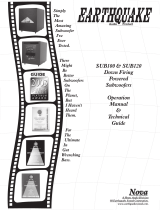 Earthquake Sound Sub120 User manual
Earthquake Sound Sub120 User manual
-
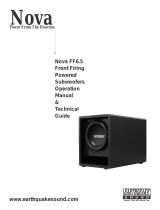 Earthquake Sound Nova FF6.5 Owner's manual
Earthquake Sound Nova FF6.5 Owner's manual
-
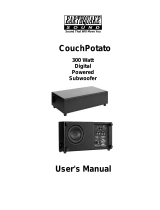 Earthquake Sound CP-8 User manual
Earthquake Sound CP-8 User manual
-
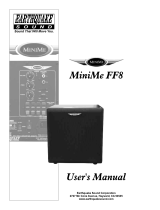 Earthquake Sound MiniMe FF8 User manual
Earthquake Sound MiniMe FF8 User manual
-
 Earthquake Sound S-10 User manual
Earthquake Sound S-10 User manual
-
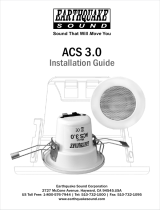 Earthquake Sound ACS3.0 Owner's manual
Earthquake Sound ACS3.0 Owner's manual
-
Earthquake Sound 600WRMS User manual
-
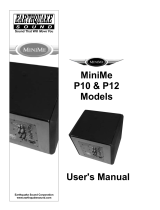 Earthquake Sound P10 User manual
Earthquake Sound P10 User manual
-
 Earthquake Sound MiniMe P8V2 P8WV2 Owner's manual
Earthquake Sound MiniMe P8V2 P8WV2 Owner's manual
-
 Earthquake Sound FF10 Owner's manual
Earthquake Sound FF10 Owner's manual
Other documents
-
MadBoy BOSS-10 Specification
-
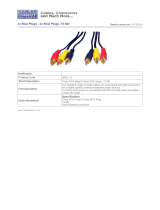 Cables Direct 2RR3-15 Datasheet
Cables Direct 2RR3-15 Datasheet
-
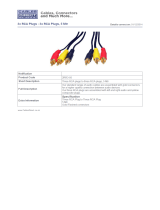 Cables Direct 2RR3-05 Datasheet
Cables Direct 2RR3-05 Datasheet
-
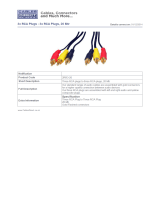 Cables Direct 2RR3-20 Datasheet
Cables Direct 2RR3-20 Datasheet
-
XTZ SUB 8.17 Owner's manual
-
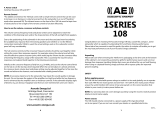 Acoustic Energy 108 Subwoofer User manual
Acoustic Energy 108 Subwoofer User manual
-
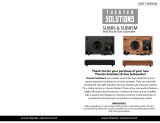 Theater Solutions SUB8SM User manual
Theater Solutions SUB8SM User manual
-
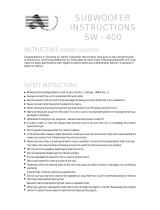 Aaron SW-400 Operating instructions
Aaron SW-400 Operating instructions
-
Aaron SW-200 Operating instructions
-
Massive Audio BOOM88 User manual






























